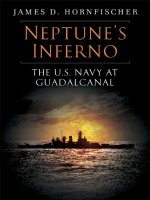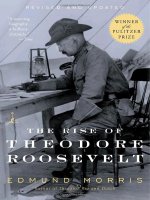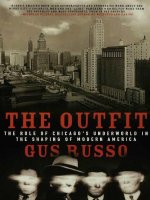Caroline alexander the endurance shackletons le ion (v5 0)
Bạn đang xem bản rút gọn của tài liệu. Xem và tải ngay bản đầy đủ của tài liệu tại đây (12.02 MB, 227 trang )
The crew of the Endurance
Top row: Holness and Bakewell. Second row: McNish, James, Wild, Worsley, Stephenson
(above Worsley), Hudson, How, Green. Third row: Cheetham, Crean, Hussey, Greenstreet, Shackleton,
Sir Daniel Gooch (who sailed as far as South Georgia as a “dog minder”), Rickinson, Hurley.
Front row: Clark, Wordie, Macklin, Marston, McIlroy.
Also by Caroline Alexander
One Dry Season
The Way to Xanadu
Battle's End
Mrs. Chippy's Last Expedition
Cutting through the pack ice
TO MRS. CHIPPY
Who pioneered the way
Blackborow with Mrs. Chippy
Never for me the lowered banner, never the last endeavour.
—SIR ERNEST SHACKLETON
The Rescue
Sir Ernest Shackleton
Frank Hurley
The expedition's gifted and gritty photographer poses for a studio shot in his Burberry helmet and tunic.
The Heroic Age
T
he captain of the ship, Frank Worsley, would remember the day vividly ever
afterward. It was July, midwinter in Antarctica, and the darkness of the long polar
night had been upon them for many weeks. The temperature was –30° Fahrenheit, and
around the ship, extending to the horizon in all directions, was a sea of ice, white and
mysterious under the clear, hard stars. From time to time, the shriek of the wind outside
broke all conversation. Away in the distance, the ice would groan, and Worsley and his
two companions would listen to its ominous voice as it travelled to them across the
frozen miles. Sometimes, the little ship would quiver and groan in response, her wooden
timbers straining as the pressure from millions of tons of ice, set in motion by some
faraway disturbance, at last reached her resting place and nipped at her resilient sides.
One of the three men spoke.
“She's pretty near her end. … The ship can't live in this, Skipper. You had better make
up your mind that it is only a matter of time. It may be a few months, and it may be
only a question of weeks, or even days … but what the ice gets, the ice keeps.”
The year was 1915. The speaker was Sir Ernest Shackleton, one of the most renowned
polar explorers of his day, and the third man was Frank Wild, his second-in-command.
Their ship, Endurance, was trapped at latitude 74° south, deep in the frozen waters of
Antarctica's Weddell Sea. Shackleton had been intent on an ambitious mission: He and
his men had travelled to the south to claim one of the last remaining prizes in
exploration, the crossing on foot of the Antarctic continent.
Since December 1914, the Endurance had battled unusually heavy ice conditions,
travelling more than 1,000 miles from the remote whaling stations on the island of
South Georgia, at the gateway to the Antarctic Circle. One hundred miles short of her
intended harbor, new ice conditions brought the Endurance to a halt. A northeast gale
blowing on and o for six straight days compressed the pack against the Antarctic ice
shelf, trapping the ship fast within it. Days later, the temperature plummeted to 9°, as
good as cementing the loose pack for the winter. Meanwhile, the leisurely, unrelenting
northerly drift of the Weddell Sea carried the Endurance within the pack farther and
farther from the land it had come so close to reaching.
When Shackleton embarked upon his Imperial Trans-Antarctic Expedition, he was
already a national hero with two polar expeditions behind him, including one that had
taken him to within 100 miles of the South Pole, the farthest south anyone had travelled
at that time. Yet for all the heroism of these earlier e orts, neither had accomplished
what it had set out to do. By the time Shackleton headed south again in 1914, the prize
of the South Pole, which he had twice sought, had been claimed by others. Undaunted,
he had turned his sights upon a last great venture—the crossing of the Antarctic
continent from the Weddell to the Ross Sea. The preparations for the Endurance
expedition had been all-consuming; not the least of Shackleton's tasks had been raising
the funds to make it possible. He was forty years of age, and he had summoned all his
experience as explorer and organizer to bear on this ambitious undertaking. Shackleton
could not yet know it, but the trans-Antarctic expedition would amount to another
unsuccessful venture. Yet ultimately it would be for this, the failed Endurance expedition,
that he would be most remembered.
Antarctic exploration of the early twentieth century was unlike exploration of anywhere
else on earth. No dangerous beasts or savage natives barred the pioneering explorer's
way. Here, with wind speeds up to nearly 200 miles an hour and temperatures as
extreme as –100° Fahrenheit, the essential competitions were pure and uncomplicated,
being between man and the unfettered force of raw Nature, and man and the limits of
his own endurance. Antarctica was also unique in being a place that was genuinely
discovered by its explorers. No indigenous peoples had been living there all along, and
the men who set foot on the continent during this age could authentically claim to have
been where no member of humankind had ever cast a shadow.
Beginning in 1914 and ending in 1917, straddling the First World War, the Endurance
expedition is often said to have been the last in the Heroic Age of polar exploration. The
signi cance and ambition of Shackleton's proposed trans-Antarctic crossing is best
appreciated within a context of the ordeals of heroism—and egotism—that had played
out before. Indeed, Shackleton's greatness as a leader on the Endurance owes much to
the sometimes insane suffering of his earlier Antarctic experiences.
The Heroic Age began when the ship Discovery, under the command of Captain Robert
Falcon Scott, set out for Antarctica's McMurdo Sound in August 1901. Despite public talk
of scienti c advancement, the real objective of this rst inland expedition, as of
subsequent ones, was to reach the as yet unclaimed South Pole and win it for Britain.
Scott chose two men to accompany him on this rst bid for the pole—Dr. Edward
Wilson, a physician, zoologist, and close friend; and Lieutenant Ernest Shackleton, a
twenty-eight-year-old merchant service o cer, whose commissions had taken him to
Africa and the East. On November 2, the three men set out with nineteen sledging dogs
and ve loaded sledges. They faced an unspeakably daunting challenge, a round-trip
journey of more than 1,600 miles, hard sledging all the way, through an entirely
unknown and uncharted environment.
By day, the three man-hauled their loads with or without the aid of the dogs, ferrying
their supplies in time-consuming relays. By night they meticulously divided their meager
food into three equal portions and read Darwin to one another before retiring to their
frozen sleeping bags. They starved, they su ered from scurvy. The dogs sickened and
dropped, and were butchered to feed the survivors. Scott pushed his band on to 82°17?
south, 463 miles north of the pole, before acknowledging their desperate situation and
reluctantly giving the order to turn back. By this time, Shackleton was spitting blood,
undone by scurvy, and sometimes had to be carried on the sledge. On February 3, 1903,
three months after setting out, they arrived back at their ship. The last leg of this
terrible journey had been a race for their very lives.
This rst Antarctic trek established the pattern of heroic su ering that would
characterize subsequent British expeditions. Yet even a casual perusal of the explorers'
diaries suggests this su ering was unnecessary. Less than three weeks into their journey
Wilson notes: “Dogs getting very tired and very slow (19 November). … The dogs made
terribly heavy weather of it today, and the dog driving has become the most
exasperating work (21 November). … Dogs very weary indeed and terribly slack and
the driving of them has become a perfectly beastly business (24 November).” Day after
day, one follows the downward spiral of these wretched, exhausted animals. It is
unpleasant reading.
Scott's own diary sounds more alarms: “On the whole our ski so far have been of little
value.… [T]he dogs, which have now become only a hindrance, were hitched on behind
the sledges,” Scott wrote on January 6, 1903. The following day he notes that they
“dropped all the dogs out of the traces and pulled steadily ourselves for seven hours,
covering ten good miles by sledge-meter.… [T]he animals walked pretty steadily
alongside the sledges.” It is a stunningly improbable image: Three men walking across
Antarctica at about a mile an hour with their skis securely strapped to the sledges,
accompanied by a pack of dogs. Scott and his companions had not taken the time to
become pro cient on skis, nor did they have any knowledge of driving dogs. Their
prodigious di culties, therefore, were the result of almost inconceivable incompetence,
not necessity. And the men were starving—not because unforeseen disaster had taken
their supplies, but because they had not rationed su cient food. Shackleton, the biggest
of the men, suffered the most because he required more fuel than did the others.
And they had quarrelled. Scott and Shackleton could not have been temperamentally
more dissimilar and had virtually no rapport. As a product of the navy, Scott established
a rigid order predicated upon rank and rules; on the Discovery, in the middle of the
Antarctic, he put a man in irons for disobedience. Shackleton, an Anglo-Irishman from
the ranks of the merchant marine, was charismatic, mixing easily with both crew and
o cers. He had been chosen to accompany Scott on account of his physical strength.
The long days of white silence, the unrelenting tedium and hardship, the unrelieved
close quarters—all these factors must have shredded the men's nerves. Wilson appears to
have been forced to act as peacemaker on more than one occasion. Years later, Scott's
second-in-command told the story that after breakfast one day Scott had called to the
other men, “Come here, you bloody fools.” Wilson asked if he was speaking to him, and
Scott replied no. “Then it must have been me,” said Shackleton. “Right, you're the worst
bloody fool of the lot, and every time you dare to speak to me like that, you'll get it
back.” It is a surreal encounter, a piece of absurd theater—three men alone at the ends
of the earth in a virtual whiteout, hissing at one another.
On their return to the Discovery, Scott invalided Shackleton home. Though mortified by
his early return to England, Shackleton arrived home as a hero who had gone farther
south than anyone before. And as the lone available authority on the expedition, he
received more attention than would otherwise have been the case. This recognition, he
must have known, would prove valuable should he one day wish to stage his own
expedition. In any case, he would never again submit to the leadership of another man.
The son of a physician, Shackleton was comfortably middle-class. Born in County
Kildare, Ireland, he had lived brie y in Dublin as a child, before his parents moved their
family permanently to England. He was the eldest of two sons and had eight doting
sisters. Shackleton had been educated at Dulwich College, a middle-class public school of
high reputation, before joining the British Merchant Navy at age sixteen. Prior to
volunteering for the National Antarctic Expedition, under Captain Scott, he had been a
third o cer with a prestigious merchant service line. Charming and handsome, with
dark, brooding looks, Shackleton was a man of romantic ambitions, and in later life
would fall under the spell of many a fruitless fortune-making scheme. Polar exploration
appealed to both his poetical nature and his urgent The Heroic Age aspiration to secure
a position in the class-riven world of his time. The Discovery expedition had opened the
door onto a more glamorous and congenial life; it was a way out of the middle class.
In 1904, Shackleton married his patient sweetheart, Emily Dorman, who, as the
daughter of a well-to-do lawyer, was of modestly independent means. Now more than
ever, he wanted to establish a name for himself. When ventures into journalism,
business, and even politics failed, Shackleton moved towards his ultimate destiny. In
early 1907, he obtained seed money for a new expedition to the South Pole. In August of
the same year, after less than seven months of frantic organization, his ship Nimrod set
sail for the south.
Shackleton had learned much on the Discovery expedition, but he had not learned all
he should; the Nimrod departed with ten Manchurian ponies and only nine dogs— even
though expeditions to the Arctic had by this time proved that dog teams were the only
practical mode of polar transportation. Shackleton had also made little progress in
learning how to ski, and much of his mountaineering equipment would prove
inadequate.
These shortcomings notwithstanding, on October 29, 1908, Shackleton departed from
his base at Cape Royds over the Great Ice Barrier on his second journey south with three
companions and a team of four ponies. Once again, the pattern of man-hauling and
su ering began. The ponies slipped and oundered, at times sinking up to their bellies
in the snow. Eventually, most would be shot and eaten. By early December, Shackleton
and his three companions—Frank Wild, Dr. Eric Marshall, and Lieutenant Jameson
Adams—had reached the tongue of a massive, hitherto unknown glacier that owed
from the range of mountains abutting the Great Ice Barrier. Christened by Shackleton
the Beardmore Glacier after one of the expedi-tion's patrons, it was to be his party's
gateway from the ice shelf on which they had been travelling to the continental plateau
behind the mountains. It provided a fearful, glittering passage. Without crampons the
men, accompanied by Socks, the lone remaining and unshod pony, fought their way up
the dangerous tongue of ice. On the third day, the pony fell down a crevasse to his
death. Su ering from snow-blindness, hunger, and frostbite, the men struggled beyond
the Beardmore on to 88°23? south—approximately 100 miles short of the pole. Here,
Shackleton took realistic stock of their meager provisions and failing strength, and made
the bitter decision to turn back while survival was still possible. Near journey's end, with
Adams critically ailing, Shackleton and Frank Wild dumped all the gear they could spare
so as to make a desperate dash for the relief of their companion. They travelled thirtysix hours with little rest, only to nd that the base camp they had so long dreamed of
was deserted. They were discovered shortly afterward when the Nimrod returned with a
search party preparing to winter over and look for their bodies.
Shackleton's e ort surpassed Scott's southern record by some 360 miles. Although he
and his companions had su ered greatly, they survived and, thanks in great part to the
fresh pony meat, had kept scurvy at bay. Back in England, Shackleton became a
national hero and was knighted. Although he publicly made tentative plans for another
southern expedition, this one to explore the land west of Cape Adare in the Ross Sea, his
time was consumed by e orts to pay o the Nimrod 's debts. For the next couple of
years, Shackleton hit the lecture trail, dictated a best-selling book called The Heart of the
Antarctic, and even turned the Nimrod into a museum, to which he charged admission.
Meanwhile Scott, with the prayers and good wishes of the nation, headed back for
another assault on the South Pole. Shackleton, mired in nancial obligations, could only
read the headlines and wait.
Scott's last journey is, of course, an epic of its own. In October 1910, the news broke
that the Norwegian explorer Roald Amundsen had secretly turned back from a projected
trip to the Arctic and was headed south, intent on beating the British to the pole. The
race was on. Both expeditions set out in October 1911, Scott from Cape Evans, near his
old base, Amundsen from the Bay of Whales, some distance to the east. Scott's party,
bogged down by a bewildering array of modes of transporta-tion—ponies, such as
Shackleton had already proved to be useless, motor sledges that didn't work, and dogs
that no one knew how to drive—slogged their way south, adhering closely to
Shackleton's route and playing out the now traditional drama of starvation and
hardship. Amundsen and his four companions, travelling by ski with a team of fty-two
superbly conditioned and trained dogs, averaged a comfortable fteen to twenty miles a
day in comparison with Scott's ragged ten- to thirteen-mile daily pace. On their
homeward run, the Norwegians covered up to thirty miles a day.
“Cannot understand what the English mean when they say that dogs cannot be used
here,” Amundsen puzzled in his diary. On January 16, 1912, Scott and his debilitated
team staggered to 89° south to nd the snow crisscrossed with the tracks of Amundsen's
party.
“The worst has happened,” Scott allowed in his diary. “All the day dreams must go.”
The following day, the dispirited party continued to the pole, planted their ag, took
their notes and photographs, and prepared to turn back.
“Great God! this is an awful place,” wrote Scott. “Now for the run home and a
desperate struggle. I wonder if we can do it.”
They could not. Each of the ve men in Scott's company died on the ice. The end came
in a raging blizzard that trapped the party, down to three survivors, in their single tent,
a mere eleven miles south of a vital supply depot. Now Scott unfurled his real greatness
—not for expeditionary leadership, but for language.
“We shall die like gentlemen,” he wrote to the expedition's treasurer in England. “I
think this will show that the Spirit of pluck and power to endure has not passed out of
our race.” His Message to the Public is a litany of excuses stirringly pre-sented—failed
pony transport, weather, snow, “frightfully rough ice,” “a shortage of fuel in our depots
for which I cannot account,” the illness of his brave companion Titus Oates. Yet, it is a
cynical reader indeed who remains unmoved by this tide of nal words penned in the
gallant little tent and poured forth into the white night that raged around it.
“Had we lived, I should have had a tale to tell of hardihood, endurance, and courage
of my companions, which would have stirred the heart of every Englishman. These
rough notes and our dead bodies must tell the tale.”
“It seems a pity,” he wrote as his diary's last entry, on March 29, “but I do not think I
can write more.”
It took nearly a year for Scott's last words to reach the outside world. When they did,
in February 1913, they plunged the entire empire into deep mourning. “With the sole
exception of the death of Nelson in the hour of victory, there has been nothing so
dramatic,” a journalist noted. Scott's tragedy was commemorated in the press and in the
pulpit. In the public telling, his party's fatal, perverse blunders were not merely
forgotten but evaporated out of existence. A myth was born, and propagated by the
eventual publication of Scott's diaries, subtly edited by Sir James Barrie, the author of
Peter Pan and a master of sentimental prose.
This, then, was the background against which Shackleton pulled together his Imperial
Trans-Antarctic Expedition. Setting out the year after the news of Scott's death, the
Endurance expedition was ambivalently perceived as both a gripping national event and
an anticlimax. In the public imagination, Antarctica was very much the place for heroic
adventure; yet it seemed unthinkable that any future success could surpass Scott's
glorious failure.
Shackleton's aims, as stated in his expedition's prospectus, were compelling:
From the sentimental point of view, it is the last great Polar journey that can be made.
It will be a greater journey than the journey to the Pole and back, and I feel it is up to
the British nation to accomplish this, for we have been beaten at the conquest of the
North Pole and beaten at the conquest of the South Pole. There now remains the largest
and most striking of all journeys—the crossing of the Continent.
Shackleton eventually cobbled together funds for his grand venture. His principal
backers were the British government and Sir James Key Caird, a wealthy Scottish jute
manufacturer who contributed a princely gift of £24,000. Other benefactors of note
were Miss Janet Stancomb-Wills, daughter of a tobacco tycoon, and Dudley Docker, of
the Birmingham Small Arms Company. Lesser outright gifts came from the Royal
Geographical Society, other individuals, and public schools throughout England, who
underwrote the dog-sledging teams.
Another source of money was the advance sale of all “news and pictorial rights” to the
expedition. Antarctica was the rst continent to be discovered by camera. Beginning
with Scott's rst expedition in 1902, photography had captured the slow inroads made
on its white, inviolate vastness. These photographic records had proved to be not only
of historic and geographic interest, but also highly popular. Herbert Ponting's 90° South,
a cinematographic tribute to Scott's last expedition, was still a favorite when
Shackleton's party set out. Mindful of this, Shackleton formed the Imperial Trans
Antarctic Film Syndicate speci cally to exploit all lm rights to the expedition, exclusive
story rights having been sold to the Daily Chronicle.
Shackleton purchased a ship from Norway's famous Framnaes shipyard, long a
supplier of polar vessels. A 300-ton wooden barquentine, she was named Polaris and had
never sailed. She was 144 feet long, built of planks of oak and Norwegian r up to two
and one-half feet thick, and sheathed in greenheart, a wood so tough it cannot be
worked by conventional means. Every detail of her construction had been scrupulously,
even lovingly, planned by a master shipwright to ensure her maximum strength. She
was, it seemed, ideally equipped to withstand the ice. Shackleton renamed her
Endurance after his family motto: Fortitudine Vincimus—”by endurance we conquer.”
In fact two vessels were required. While Shackleton intended to commence his
overland trek from the Weddell Sea, his plans called for a relief ship to sail to his old
base at Cape Royds in the Ross Sea. From there, a six-man depot-laying party would
advance inland, depositing caches of supplies for the use of Shackleton's
transcontinental party when it slogged its way overland from the other side. For this
task, Shackleton purchased the Aurora, an old-time sealer built in 1876 that had served a
former colleague, the great Australian explorer Douglas Mawson.
By August, all seemed ready. Although the British press had shown keen interest in
Shackleton's latest polar adventure, the departure of the Endurance from its London dock
on August 1, 1914, was eclipsed by more important news: Germany had declared war
on Russia, and a European war was now imminent. Having sailed from London to
Plymouth, the ship was still in British waters when the order for general mobilization
was given on Monday, August 4. After consulting with his crew, Shack-leton placed the
Endurance and her company at the disposal of the government, believing “there were
enough trained and experienced men among us to man a destroyer.” Privately, he must
have held his breath: After so much work and planning, to be thwarted at the start! But
the one-word telegraphed reply from the Admiralty dissolved his fears: “Proceed.” A
longer cable from Winston Churchill, First Lord of the Admiralty, followed, saying that
the authorities desired the expedition to take place, and on August 8, the Endurance set
sail from Plymouth.
Dr. Macklin grooming Mooch and Splitlip
The sixty-nine sledging dogs taken on board in Buenos Aires required constant attention. They
were quarantined in England at the Lost Dogs Home, Hackbridge.
With the example of Amundsen's triumph of e ciency vividly before him, Shackleton
had taken what were by British standards enormous pains with his preparations. He had
succeeded in having seconded to the expedition a young o cer from the Royal Marines
who, although o cially the motor expert, was also pro cient enough on skis to act as
an instructor for the company. The Illustrated London News ran a photograph of
Shackleton testing his new domed tents in Norway. He had consulted with professional
nutritionists regarding sledging rations and, heeding the adamant advice of the
Norwegians, arranged to have sixty-nine Canadian sledge dogs delivered to Buenos
Aires, where the Endurance would pick them up on her way south. These were, according
to his second-in-command, “a mixture of wolf & about any kind of big dog, Collie,
Mastiff, Great Dane, Bloodhound, Newfoundland, Retriever, Airedale, Boarhound etc.”
Despite these e orts his party was not as shipshape as Shackleton may have thought.
He had his dogs, but his sole experienced dog trainer and driver, a Cana dian, dropped
out at the last minute when Shackleton was unwilling to pay a hefty insurance deposit;
also left behind were worm pills, which, as matters turned out, the dogs would
desperately need. Shackleton's plans for the continental crossing called for an average
of fteen miles' sledging a day, very close to Amundsen's outward-going average of
sixteen—and yet only one of Shackleton's men left England actually knowing how to
ski.
Owd Bob
The sledging dogs were not huskies, but a mixed collection of big dogs who had shown in
Canada that they were adapted to the cold. “Actually there is not one that is not to some
extent a mongrel.” ( Lees, diary)
Soldier
Wild's team leader
But the expedition had intangible assets deriving from Shackleton's previous
endeavors. In 1909, having trudged to 88° south, 100 miles short of the pole, he had
turned his back on certain glory and led his men on the long journey home. After so
many hard miles, it was excruciating to leave the unclaimed prize for another man— let
alone a rival. Yet Shackleton resisted persuading himself that he could safely cover those
forgone miles, or that they counted for more than life itself. Had he been less selfpossessed, or more desperate for glory, undoubtedly Ernest Shackleton would have been
the rst man to stand at the South Pole—and he and his trusting men would have died
somewhere close to where Scott and his party perished in their little tent. Shackleton's
decision to turn back was more than a singular act of courage; it bespoke the dogged
optimism that was the cornerstone of his character. Life would always o er more
chances.
“One has the feeling that if it had been Shackleton who lost to Amundsen at the pole,
he would have met up with the Norwegians on the way back, and they would have all
held a big celebratory party,” a distinguished polar historian once told me.
The despondency that clearly crushed Scott on his loss to Amundsen was unknown to
Shackleton. He seems to have been possessed of a ferocious but handily adaptable
single-mindedness: Once intent on achieving the pole, he strained every nerve to get
there; but when survival became the challenge, he was not distracted by such demons as
regret or the fear of being perceived a failure.
Early in his career, Shackleton became known as a leader who put his men rst. This
inspired unshakable con dence in his decisions, as well as tenacious loyalty. During the
march back from 88° south, one of Shackle-ton's three companions, Frank Wild, who had
not begun the expedition as a great admirer of Shackleton, recorded in his diary an
incident that changed his mind forever. Following an inadequate meal of pemmican and
pony meat on the night of January 31, 1909, Shackleton had privately forced upon Wild
one of his own biscuits from the four that he, like the others, was rationed daily.
“I do not suppose that anyone else in the world can thoroughly realize how much
generosity and sympathy was shown by this,” Wild wrote, underlining his words. “I DO
by GOD I shall never forget it. Thousands of pounds would not have bought that one
biscuit.”
Frank Wild
Shackleton's loyal second-in-command, according to Macklin, was “always calm, cool or
collected, in open lanes or in tight corners he was just the same; but when he did tell a man to
jump, that man jumped pretty quick.”
When Shackleton headed south on the Endurance in August 1914, it was with Frank
Wild as his second-in-command. Wild never forgot the private act of kindness, and his
adamantine loyalty to Shackleton would prove to be one of the expedition's major
assets. However de cient the preparations for the Imperial Trans-Antarctic Expedition
may have been, on one point it was secure: Its men had a leader who had shown signs
of greatness. To be sure, Shackleton would fail once more to achieve his expedi-tion's
goal; in fact, he was destined never to set foot on the Antarctic continent again.
Nevertheless, he would see his men through one of the greatest epics of survival in the
annals of exploration.
On the bow of the Endurance, December 9, 1914
“Misty weather obscuring distant view & at 4:15 run into the pack again.” ( Hurley, diary)
South
L
eaving England on August 8, 1914, the Endurance headed south by way of Madeira,
Montevideo, and Buenos Aires, where it spent nearly two weeks loading stores
while adjustments were made to the crew. Shackleton himself did not join the expedition
until it reached Buenos Aires in mid-October. All had not been easy on this rst leg
south. Short of fuel, the Endurance had burned the wood allocated for the magnetician's
Antarctic hut, and under the command of the high-spirited Captain Frank Worsley, a
New Zealander, discipline aboard ship had been markedly lax. Worsley himself
mentions an altercation in Madeira, noting with some gusto, “Irving was cut with a
sword on top of his head & Barr had had a large ower pot broken in his face.”
Signi cantly, shortly after Shackleton met his ship, the names Irving and Barr, along
with two others now forgotten, disappear from the ship's roll.
Also joining the Endurance in Buenos Aires, a few days before Shackleton, was James
Francis Hurley, a gifted Australian photographer, and the man upon whom Shackleton's
lm syndicate had pinned its hopes. Hurley was born for this kind of venture.
Independent and stubborn even as a boy, he ran away from home at the age of thirteen,
nding work with the local ironworks, which in turn took him to the Sydney dockyards.
While a teenager he bought his rst camera, a 15-shilling Kodak box paid for with a
shilling a week. Hurley's first professional work was taking pictures for postcards, but he
had quickly moved on to more congenial assignments.
On October 26, the Endurance, painted black and loaded with fresh supplies as well as
sixty-nine Canadian sledging dogs, set sail for the South Atlantic. The company had not
been particularly reassured to learn that the unusually wet weather in Buenos Aires
indicated that the ice had not broken in the Weddell Sea. Nor could the state of the
funding, shaky as usual, have contributed to Shackleton's peace of mind. James Wordie,
the expedition's geologist, had advanced personal monies to Shackleton for the purchase
of fuel. And although the ship carried a wireless receiver, the expedition could not a ord
to purchase a transmitting plant. Nevertheless, the Endurance was bound at last for
South Georgia, east of the Falklands, her final port of call.
Like most expeditions of this kind, the ship carried a mixed company of o cers and
scientists, as well as seamen. In Scott's expeditions, the two groups had been strictly
segregated in naval fashion, but under Shackleton less attention was paid to niceties of
class.
“So I nd we have got to work!” wrote marine captain Thomas Orde-Lees in his diary.
“The crew of the ship is insu cient for her needs as a sailing ship & so whenever she is
under sail & a sail requires altering in any way we—the scientists, six of us—have to
pull on the ropes.… Rope pulling makes the hands sore & the ropes are exceedingly









